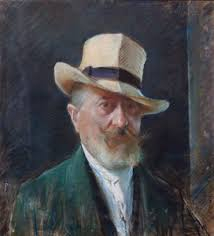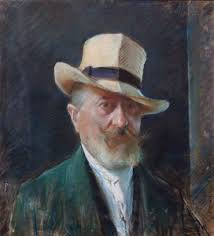Alceste Campriani
( 1848-1933 )
Biography


Alceste Campriani was an Italian painter associated with the Macchiaioli movement, active between the late 19th and early 20th centuries. Trained at the Academy of Fine Arts in Naples from 1862 to 1869, he studied alongside Giuseppe De Nittis, Vincenzo Gemito, and Antonio Mancini. He later joined the Scuola di Resìna, a group close to the Neapolitan branch of the Macchiaioli, which emphasized plein-air painting and the study of immediate light effects.
Through De Nittis, Campriani came into contact with the French art dealer Eugène Goupil, with whom he collaborated from 1870 to 1884. This partnership enabled him to promote his work widely across Europe and America, earning him international recognition.
In 1894, he took part in the Third International Exhibition in Vienna with Scirocco sulla costiera di Amalfi. The following year, the Italian Ministry of Public Instruction purchased the painting for the National Gallery of Modern Art in Rome (today housed in the Camera dei Deputati). Some Italian sources also mention that the work was exhibited at the 1895 Venice Biennale, a sign of its high regard at the time.
From 1891 to 1921, Campriani taught at the Academy of Fine Arts in Lucca, where he became director in 1911. He trained many Tuscan artists and played a key role in the region’s cultural life.
Campriani also created several decorative works for the Caffè Gambrinus in Naples, a landmark of Neapolitan artistic life around 1890. His art, characterized by luminous naturalism and poetic sensitivity, reveals a constant fascination with the landscapes of Campania and refined genre scenes.
93400 Saint-Ouen sur Seine

